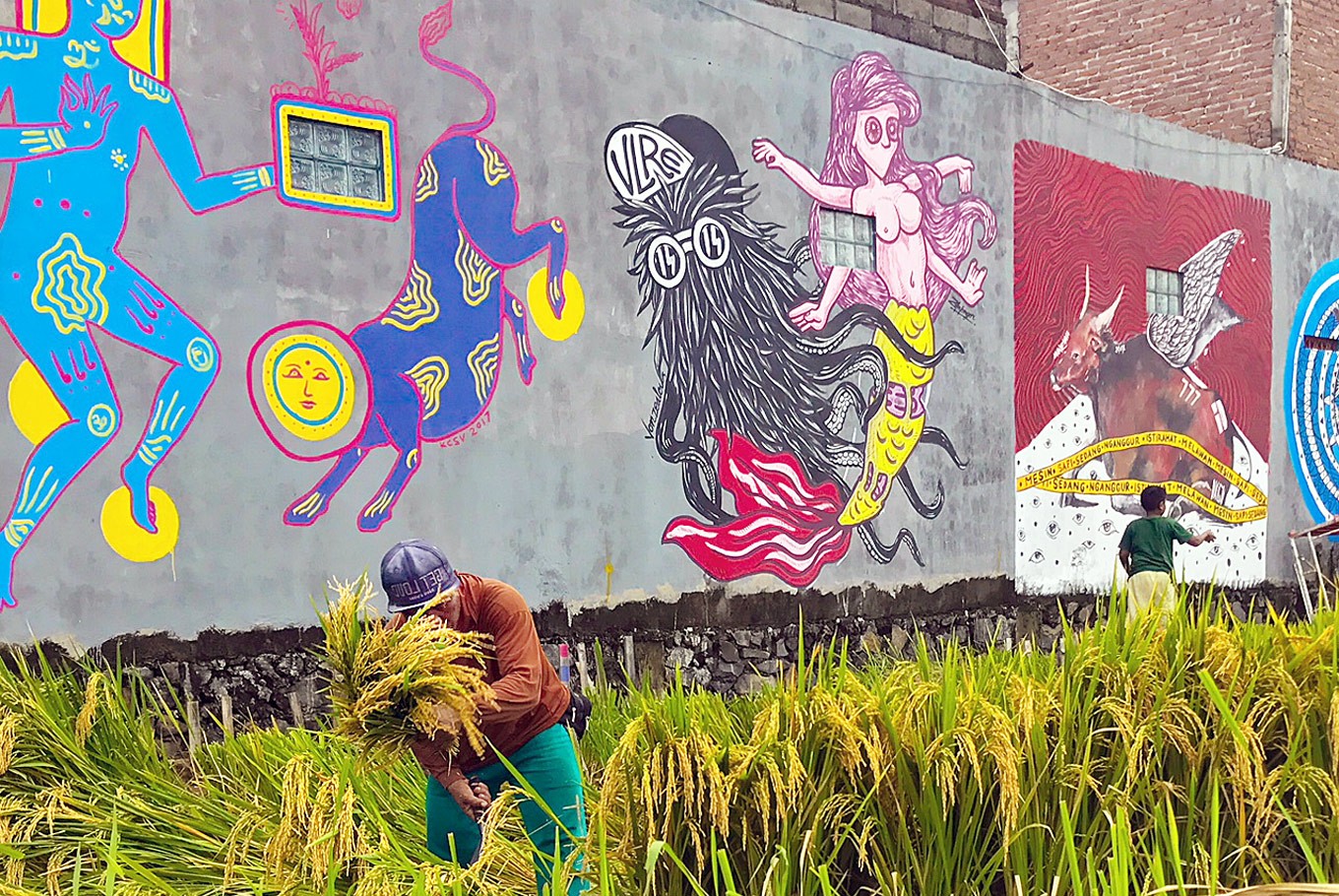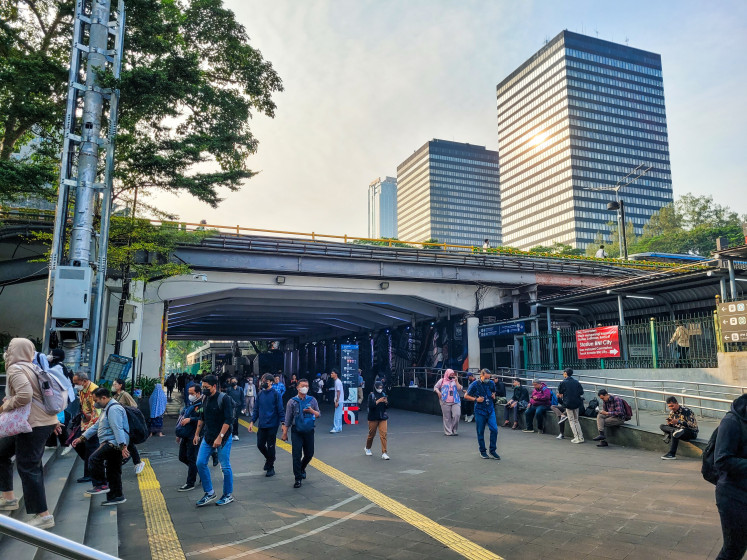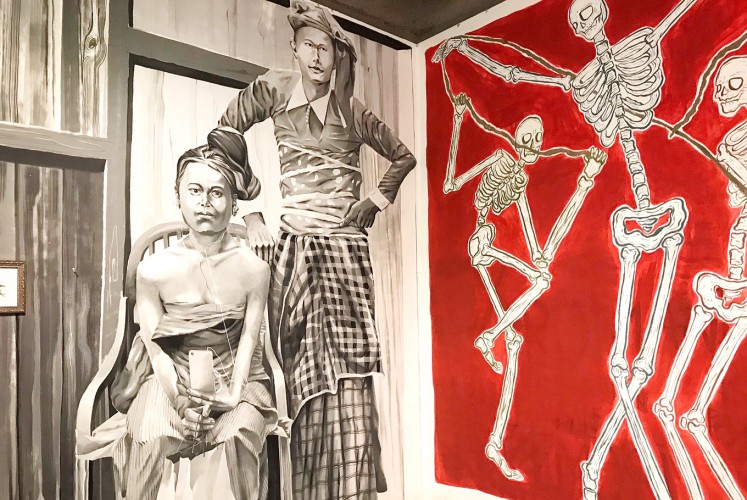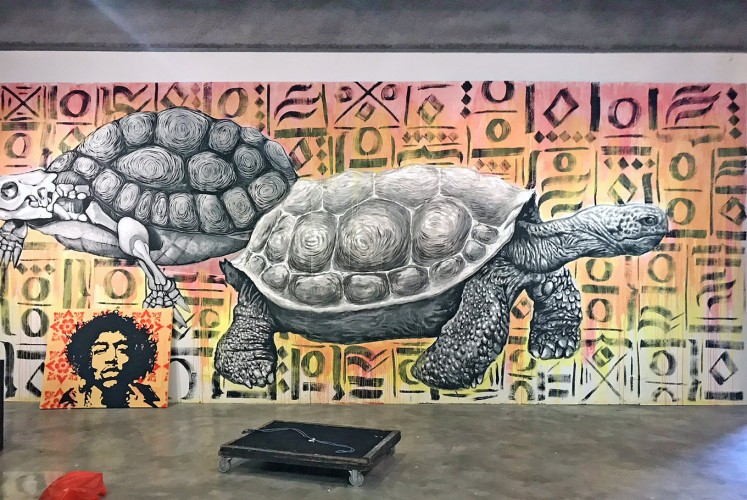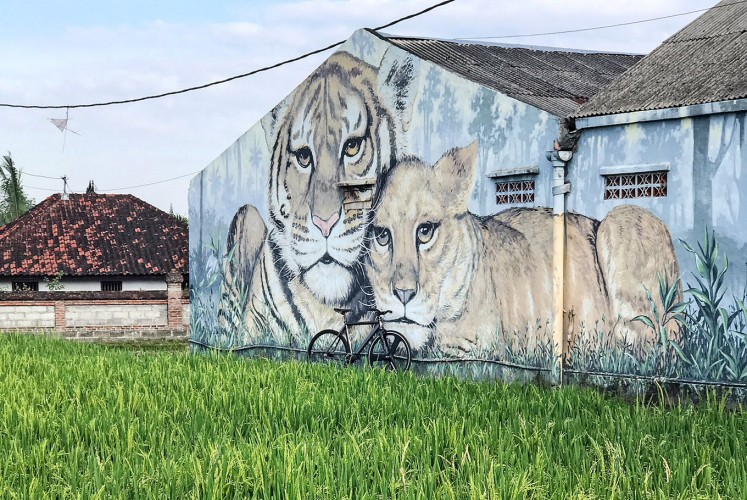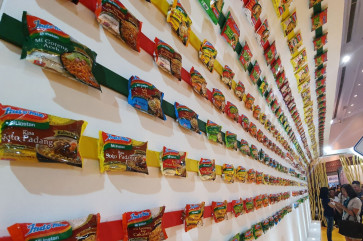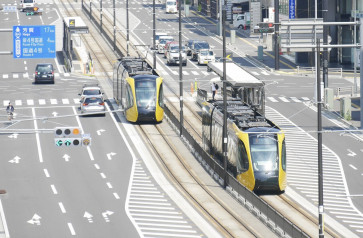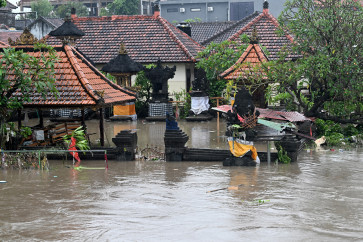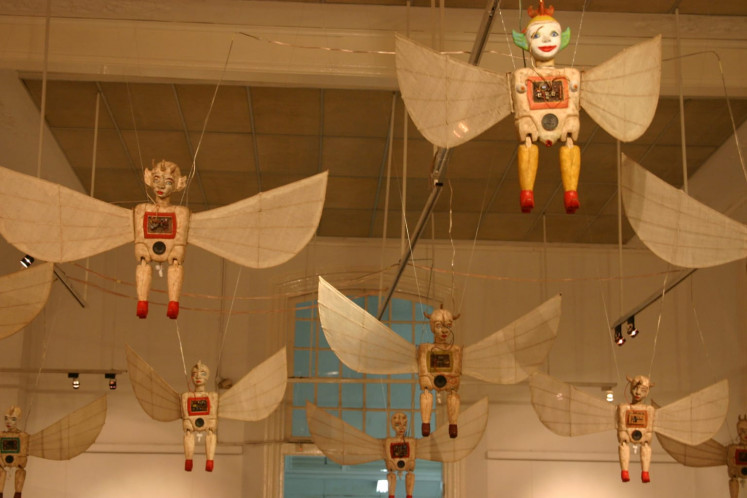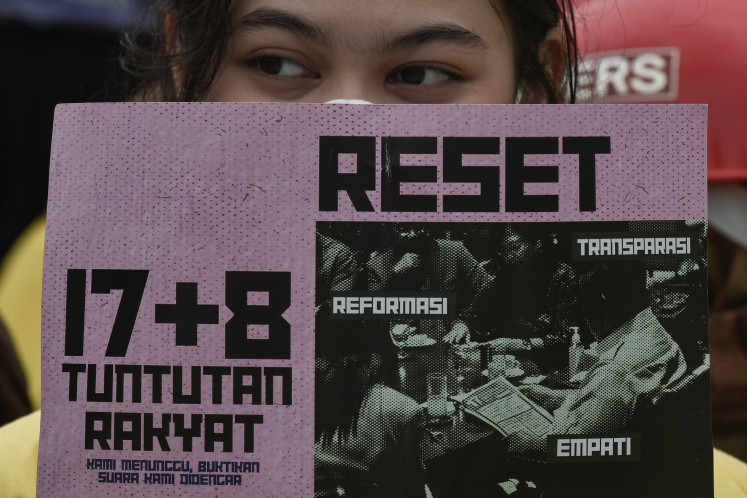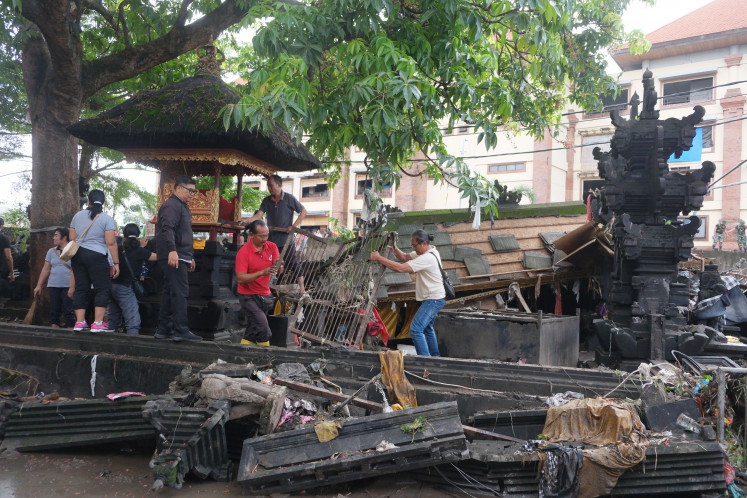Popular Reads
Top Results
Can't find what you're looking for?
View all search resultsPopular Reads
Top Results
Can't find what you're looking for?
View all search resultsBali's unstoppable rise of street art
“Street art could make a city, especially ones being infected by colorful but meaningless commercial billboards, a healthier place to live,” Warih said.
Change text size
Gift Premium Articles
to Anyone
Street art is fast becoming the island’s most attractive and dynamic form of visual expression.
The year 2017 was a glorious year for the island’s street art and its proponents. The year saw the esthetic form, previously confined to walls of abandoned buildings or corners of deserted streets, making major inroads into posh restaurants, trendy cultural hubs and even influential galleries.
“Gift from the Street,” a street art exhibition running from mid-December to early January, was the perfect example of the art form’s successful attempt to expand its reach and audience base.
It was held in Bentara Budaya Bali (BBB), a cultural establishment owned by Kompas, the country’s most influential daily. In recent years, BBB has gained respect among the island’s art lovers due to its well-curated programs spanning a wide spectrum of art forms.
“Well, BBB essentially is not a gallery, but a public space, where any creators who have made high-quality artwork and displayed a passionate dedication to the art would be appreciated and offered a space to present their work,” BBB chief curator Warih Wisatsana said about the exhibit.
Featuring the works of members of Komunitas Djamur (Instagram handle:@djamur_komunitas), one of the island’s oldest street art collectives, it featured murals, installations, paintings and photographic works created by 13 members of the collective.
“Komunitas Djamur has been consistently creating and promoting street art for 10 years and it has became a major power in the development of street art in Bali,”
Consumerism: One of the works displayed at a recent exhibition at Bentara Budaya Bali gives a poignant critique of the prevailing lifestyle of consumerism among Balinese. (JP/I Wayan Juniarta)Most of the works displayed in the exhibit dealt with contemporary issues the island faces, ranging from ecological destruction to uncontrolled tourism development.
A mural of a Balinese woman, painted in black and white and in the traditional costume of the 1930s, poignantly captures the wanton consumerism that currently prevails among most of the island’s elites and middle-classers. In her left hand is the ubiquitous smartphone while her right hand clasps several shopping bags.
The ability to “speak up” on sensitive issues, particularly on the perils brought by tourism and capitalism, has been identified as an important factor behind the rising popularity of street art, especially among the island’s youths, who in the last five years have grown more critical toward those two issues.
The Anti Corruption Festival early December at Denpasar’s Puputan Badung Park and Bali Yang Binal Art
Festival late December showed that murals have also become a popular method to convey a message and rally public support for important issues. Both events showcased works from another influential street art collective: Komunitas Pojoks (@the_pojoks).
“The street artists offer alternative perspectives in evaluating Bali. These perspectives are not shackled by the previous generation’s adoration toward tourism. Such adoration has often turned a blind eye toward the commodification of art as nothing but an exotic product for the tourists,” Warih suggested.
Esthetic: The rising popularity of murals is attributed to the ability of street artists to create works that are both thought provoking and visually captivating. (JP/I Wayan Juniarta)Another factor behind the rising popularity of street art is the ability of its artists to elevate their game. The island’s leading street artists have come a long way from spraying walls with angry words and angrier images to making gorgeous images with deep symbolism.
Just look at the murals created by Kuncir Sathya Viku (@kuncirsv), who is inspired by and deconstructs the esoteric rerajahan (drawings of sacred characters), and I Wayan Subudi (@swoofone), who breathes new life to Balinese Hinduism’s sacred geometry, to taste the aesthetic experimentation of the island’s leading street artists.
Other fine examples of the continuous march toward better aesthetics are the works of WAP (@wap_bali), whose mural of a corruptor with multiple faces across Sanglah Market is simply astounding, and the famed Slinat (@slinat), whose brutally honest murals on the dark side of tourism show that you can be both highly critical and highly aesthetic at the same time.
The elevated aesthetic of these artists is the primary reason why murals have increasingly become a staple on the interior walls of the island’s chic coffee shops and posh restaurants. This phenomenon has driven the artist’s fee upward of Rp 500,000 (US$37.52) per square meter.
“But we never charge for community-initiated event, because street art is basically a collaborative and communal celebration,” Kuncir said.
Enlivening: A mural beautifies an otherwise dull wall of a house in East Denpasar. (JP/I Wayan Juniarta)Kulidan (@kulidan.kitchen) in Sukawati, Rumah Sanur (@rumahsanur) in Sanur and Allcapsstore (@allcapsstore) in Canggu are some of the cultural hubs that support street art and are graced by attractive murals.
Kulidan boasts two murals by the paddies, Rumah Sanur has a mural inspired by the ancient witch lore Calonarang, and Allcapsstore is hosting an ongoing street art exhibit titled “This is Bali.”
“Street art could make a city, especially ones being infected by colorful but meaningless commercial billboards, a healthier place to live,” Warih said.

